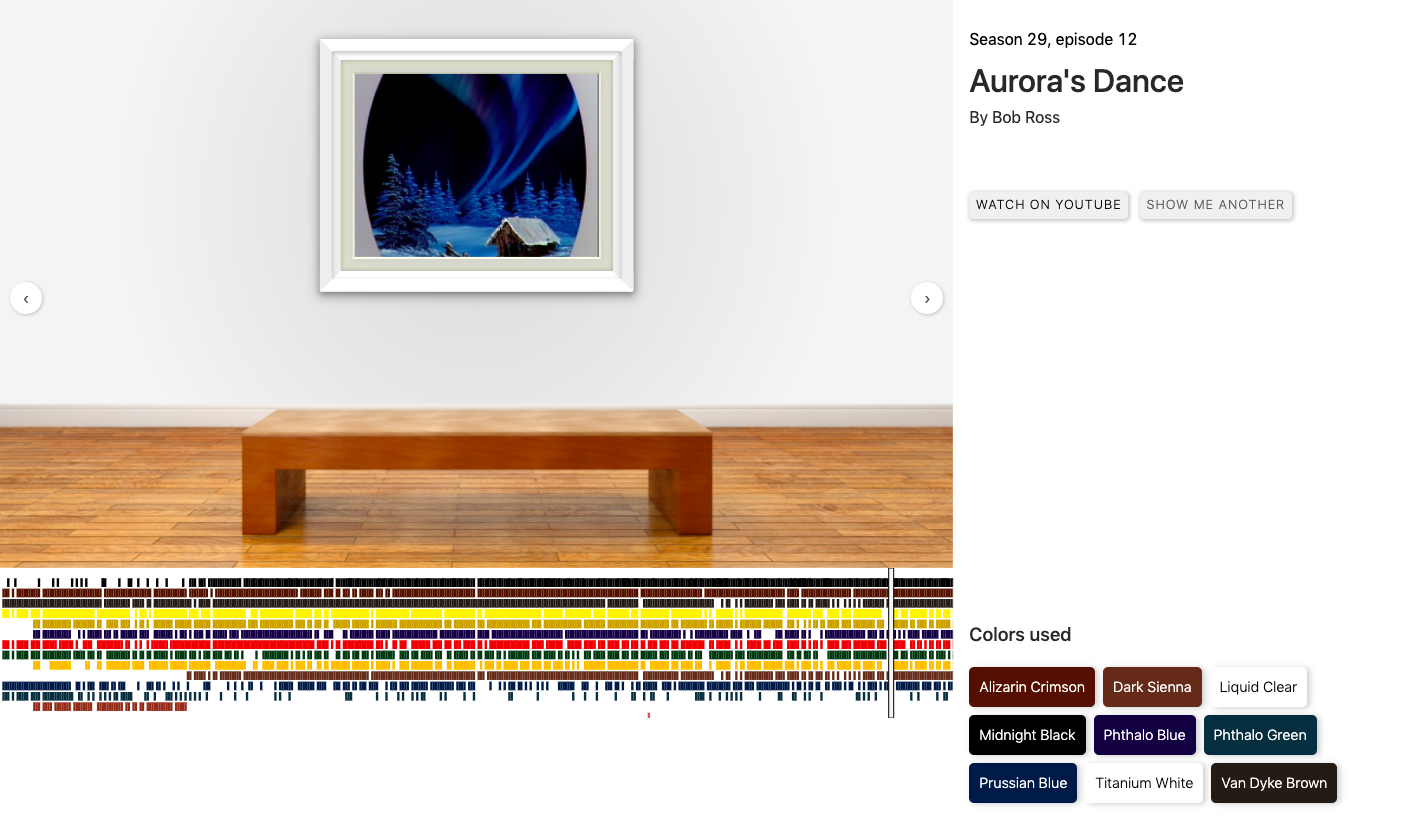[Most Recent Entries] [Calendar View]
Monday, June 7th, 2021
| Time | Event |
| 8:00a | What Happened During the 1921 Tulsa Massacre, One of the Worst Episodes of Racial Violence in U.S. History In February 1915, Thomas Dixon, author of popular novel The Clansman, and D.W. Griffith, the director who adapted the book into the film Birth of a Nation, lobbied then-president Woodrow Wilson for a screening at the White House. The two were sure their story would get a warm reception from the “well documented racist” and onetime scholar who produced a five-volume History of the American People, in which he portrayed the South as “overrun by ex-slaves who were undeserving of freedom,” as Boston University journalism professor Dick Lehr remarks. Whether or not Wilson actually uttered the words attributed to him afterward (“It’s like writing history with lightning”), he approved the film’s message and rebuffed Black leaders who were “appalled and outraged,” says Lehr. The moment was pivotal for the birth of the Civil Rights movement, he argues in a recent book. Following the country’s entry into World War I, it also lit the fires of what novelist, composer and executive director of the NAACP James Weldon Johnson called “Red Summer”… a summer of lynchings, lootings, burnings, shootings and other violence. Mass lynchings — ignored or misconstrued as “race riots” for decades, though now properly referred to as massacres — took place all over the country between 1917 and 1923 under various pretexts, “in at least 26 cities,” Deneen Brown writes at National Geographic, “including Washington, D.C.; Chicago, Illinois; Omaha, Nebraska; Elaine, Arkansas; Charleston, South Carolina; Columbia, Tennessee; Houston, Texas,” and — the bloodiest and most destructive of them all — Tulsa, Oklahoma, an event many learned about for the first time when the current president proclaimed its 100th anniversary, May 31st, a “Day of Remembrance.” On May 31 and June 1, 1921, the mob who rampaged through the Tulsa neighborhood of Greenwood, a prosperous black community just a generation removed from slavery, killed over 300 Black residents, “dumping their bodies into the Arkansas River or burying them in mass graves. More than a hundred businesses were destroyed, as well as a school, a hospital, a library, and dozens of churches. More than 1,200 Black-owned houses burned.” The attackers rained death from above: a report by a state-appointed commission found “Tulsa was likely the first city” in the country “to be bombed from the air.” “The economic losses in the Black community amounted to more than $1 million,” Brown notes, a figure that cannot account for personal losses that resonated through generations, like those described by the massacre’s oldest living survivor, who testified recently before a House subcommittee. Sonali Kolhatkar writes:
That the anniversary now falls on Memorial Day (then celebrated on May 30th) seems a bitter irony given that much of the backlash toward Black communities came from fear of those returning Black soldiers who stood up against the everyday violence of Jim Crow when they returned from overseas. Birth of a Nation inspired a reborn Ku Klux Klan and its supporters to turn that fear into a crusade, a kind of pre-emptive collective retaliation. “During the massacres, they murdered and maimed people indiscriminately, unprovoked,” says Alice M. Thomas, a Carnegie scholar and a professor in the School of Law at Howard University. “They went into homes, stole personal belongings, and burned down homes. They used the massacres as a cover to murder without sanction, maim without sanction, and steal without sanction. No one, to this day, has been held accountable.” Red Summer was primarily driven by what now gets coded as “economic anxiety.” Karlos K. Hill, professor of African and African American Studies at the University of Oklahoma, explains that “the Greenwood District [of Tulsa] was perhaps the wealthiest Black community in the country… a symbol of what was possible even in Jim Crow America.” Referred to as “Black Wall Street” — the moniker given to many other such communities — Greenwood posed a threat: “The fear was, if Black people could have economic and political equality, then social equality would follow right behind.” Rather than face the frightening prospect of an actual democracy, thousands of white Americans lashed out in Red Summer, burning Black Wall Streets to the ground nationwide. After a century of denial, the U.S. is only beginning to reckon with the massacres, and specifically, with Tulsa. The president’s proclamation marks a historic step in the right direction. In the Vox video above, learn more about a story “you won’t find in most history books.” As NPR notes, you can also watch another documentary on the Tulsa massacre on PBS. Related Content: When White Supremacists Overthrew a Government (1898): The Hidden History of an American Coup Take The Near Impossible Literacy Test Louisiana Used to Suppress the Black Vote (1964) Josh Jones is a writer and musician based in Durham, NC. Follow him at @jdmagness What Happened During the 1921 Tulsa Massacre, One of the Worst Episodes of Racial Violence in U.S. History is a post from: Open Culture. Follow us on Facebook and Twitter, or get our Daily Email. And don't miss our big collections of Free Online Courses, Free Online Movies, Free eBooks, Free Audio Books, Free Foreign Language Lessons, and MOOCs. |
| 2:00p | Tasting History: A Hit YouTube Series Shows How to Cook the Foods of Ancient Greece & Rome, Medieval Europe, and Other Places & Periods The food of our ancestors has come back into fashion, no matter from where your own ancestors in particular happened to hail. Whether motivated by a desire to avoid the supposedly unhealthy ingredients and processes introduced in modernity, a curiosity about the practices of a culture, or simply a spirit of culinary adventure, the consumption of traditional foods has attained a relatively high profile of late. So, indeed, has their preparation: few of us could think of a more traditional food than bread, the home-baking of which became a sweeping fad in the United States and elsewhere shortly after the onset of the COVID-19 pandemic. Max Miller, for example, has baked more than his own share of bread at home. Like no few media-savvy culinary hobbyists, he’s put the results on Youtube; like those hobbyists who develop an unquenchable thirst for ever-greater depth and breadth (no pun intended) of knowledge about the field, he’s gone well beyond the rudiments. 18th-century Saly Lunn buns, medieval trencher, Pompeiian panis quadratus, even the bread of ancient Egypt: he’s gone a long way indeed beyond simple sourdough. But in so doing, he’s learned — and taught — a great deal about the variety of civilizations, all of them heartily food-eating, that led up to ours. “His show, Tasting History with Max Miller, started in late February,” writes Devan Sauer in a profile last year for the Phoenix New Times. “Since then, Tasting History has drawn more than 470,000 subscribers and 14 million views.” Each of its episodes “has a special segment where Miller explains the history of either the ingredients or the dish’s time period.” These periods come organized into playlists like “Ancient Greek, Roman, & Mesopotamian Recipes,” “The Best of Medieval & Renaissance Recipes,” and “18th/19th Century Recipes.” In his clearly extensive research, “Miller looks to primary accounts, or anecdotal records from the people themselves, rather than historians. He does this so he can get a better glimpse into what life was like during a certain time.” If past, as L.P. Hartley put it, is a foreign country, then Miller’s historical cookery is a form of not just time travel, but regular travel — exactly what so few of us have been able to do over the past year and a half. And though most of the recipes featured on Tasting History have come from Western, and specifically European cultures, its channel also has a playlist dedicated to non-European foods such as Aztec chocolate; the kingly Indian dessert of payasam; and hwajeon, the Korean “flower pancakes” served in 17th-century snack bars, or eumshik dabang. He’s also prepared the snails served at the thermopolium, the equivalent establishment of the first-century Roman Empire recently featured here on Open Culture. But however impressive Miller’s knowledge, enthusiasm, and skill in the kitchen, he commands just as much respect for having mastered Youtube, the true Forum of early 21st-century civilization. Related Content: What Did People Eat in Medieval Times? A Video Series and New Cookbook Explain Cook Real Recipes from Ancient Rome: Ostrich Ragoût, Roast Wild Boar, Nut Tarts & More How to Bake Ancient Roman Bread Dating Back to 79 AD: A Video Primer How to Make the Oldest Recipe in the World: A Recipe for Nettle Pudding Dating Back 6,000 BC Based in Seoul, Colin Marshall writes and broadcasts on cities, language, and culture. His projects include the Substack newsletter Books on Cities, the book The Stateless City: a Walk through 21st-Century Los Angeles and the video series The City in Cinema. Follow him on Twitter at @colinmarshall or on Facebook. Tasting History: A Hit YouTube Series Shows How to Cook the Foods of Ancient Greece & Rome, Medieval Europe, and Other Places & Periods is a post from: Open Culture. Follow us on Facebook and Twitter, or get our Daily Email. And don't miss our big collections of Free Online Courses, Free Online Movies, Free eBooks, Free Audio Books, Free Foreign Language Lessons, and MOOCs. |
| 5:55p | Yes’ Rick Wakeman Explores Vivaldi’s Four Seasons, and Why It Was the First Concept Album In this 2015 production, Yes keyboardist Rick Wakeman revisits Antonio Vivaldi’s The Four Seasons, and makes the case for why “it was so far ahead of its time that it was actually the first ever concept album, making Vivaldi the world’s first rock superstar.” “Uncovering the dark rumours surrounding the churches, orphanages and canals of Venice, Rick Wakeman sets out to investigate the extraordinary life of Antonio Vivaldi. From 18th century scandals to interviews with fellow musician Mike Rutherford, uncover the mystery behind one of the world’s favourite composers.” Rick Wakeman: Vivaldi’s Four Seasons appears on the “Rick Wakeman’s World” YouTube channel. Would you like to support the mission of Open Culture? Please consider making a donation to our site. It’s hard to rely 100% on ads, and your contributions will help us continue providing the best free cultural and educational materials to learners everywhere. Also consider following Open Culture on Facebook and Twitter and sharing intelligent media with your friends. Or sign up for our daily email and get a daily dose of Open Culture in your inbox. Related Content: Rick Wakeman’s Prog-Rock Opera Adaptation of George Orwell’s 1984 14-Year-Old Girl’s Blistering Heavy Metal Performance of Vivaldi Vivaldi’s Four Seasons Brought to Life in Sand Animations by the Hungarian Artist Ferenc Cakó
Yes’ Rick Wakeman Explores Vivaldi’s Four Seasons, and Why It Was the First Concept Album is a post from: Open Culture. Follow us on Facebook and Twitter, or get our Daily Email. And don't miss our big collections of Free Online Courses, Free Online Movies, Free eBooks, Free Audio Books, Free Foreign Language Lessons, and MOOCs. |
| 11:00p | The Bob Ross Virtual Art Gallery: A New Site Presents 403 Paintings from The Joy of Painting Series
“We don’t make mistakes. We have happy accidents,” the late Bob Ross soothed fans painting along at home, while brushing an alarming amount of black onto one of his signature nature scenes. His mellow on-camera demeanor and flowing, wet-on-wet oil painting style were perfectly calibrated to help tightly-wound viewers relax into a right-brained groove. The creators of the Bob Ross Virtual Art Gallery take a more left brained approach. Having collected data on Ross’ evergreen series, The Joy of Painting, they analyzed it for frequency of color use over the show’s 403 episodes, as well as the number of colors applied to each canvas. For those keeping score, after black and white, alizarin crimson was the color Ross favored most, and 1/4 of the paintings made on air boast 12 colors. The data could be slightly skewed by the contributions of occasional guest artists such as Ross’ former instructor, John Thamm, who once counseled Ross to “paint bushes and trees and leave portrait painting to someone else.” Thamm availed himself of a single color — Van Dyke Brown — to demonstrate the wipe out technique. His contribution is one of the few human likenesses that got painted over the show’s 11-year public television run. The Bob Ross Virtual Art Gallery has several options for viewing the data.
Mouse over a grid of grey rectangles to see the 403 artworks presented in chronological order, along with titles and episode numbers. (This has all the makings of a thumping good memory game, à la Concentration… flip all the rectangles, study them, then see if you can navigate back to all the cabins or meadows.) A bar graph, similarly composed of rectangles, reveals the colors that went into each painting. Another chart analyzes Ross’ use of color over time, as he moved away from Burnt Umber and eased up on Pfthalo Green.
Indian Red was accorded but a single use, in season 22’s first episode, “Autumn Images.” (“Let’s sparkle this up. We’re gonna have fall colors. Let’s get crazy.”) For art lovers craving a more traditional gallery experience, site creator Connor Rothschild has installed a virtual bench facing a frame capable of displaying all the paintings in random or chronological order, with digital swatches representing the paints that went into them and YouTube links to the episodes that produced them. And for those who’d rather gaze at data science, the code is available on GitHub. Explore the Bob Ross Virtual Art Gallery here. Scroll down to take advantage of all the options. Related Content: Watch Every Episode of Bob Ross’ The Joy Of Painting Free Online: 403 Episodes Spanning 31 Seasons Experience the Bob Ross Experience: A New Museum Open in the TV Painter’s Former Studio Home Bob Ross’ Christmas Special: Celebrate, Relax, Nod Off Ayun Halliday is an author, illustrator, theater maker and Chief Primatologist of the East Village Inky zine. Join her Necromancers of the Public Domain: The Periodical Cicada, a free virtual variety show honoring the 17-Year Cicadas of Brood X. Follow her @AyunHalliday. The Bob Ross Virtual Art Gallery: A New Site Presents 403 Paintings from The Joy of Painting Series is a post from: Open Culture. Follow us on Facebook and Twitter, or get our Daily Email. And don't miss our big collections of Free Online Courses, Free Online Movies, Free eBooks, Free Audio Books, Free Foreign Language Lessons, and MOOCs. |
| << Previous Day |
2021/06/07 [Calendar] |
Next Day >> |












